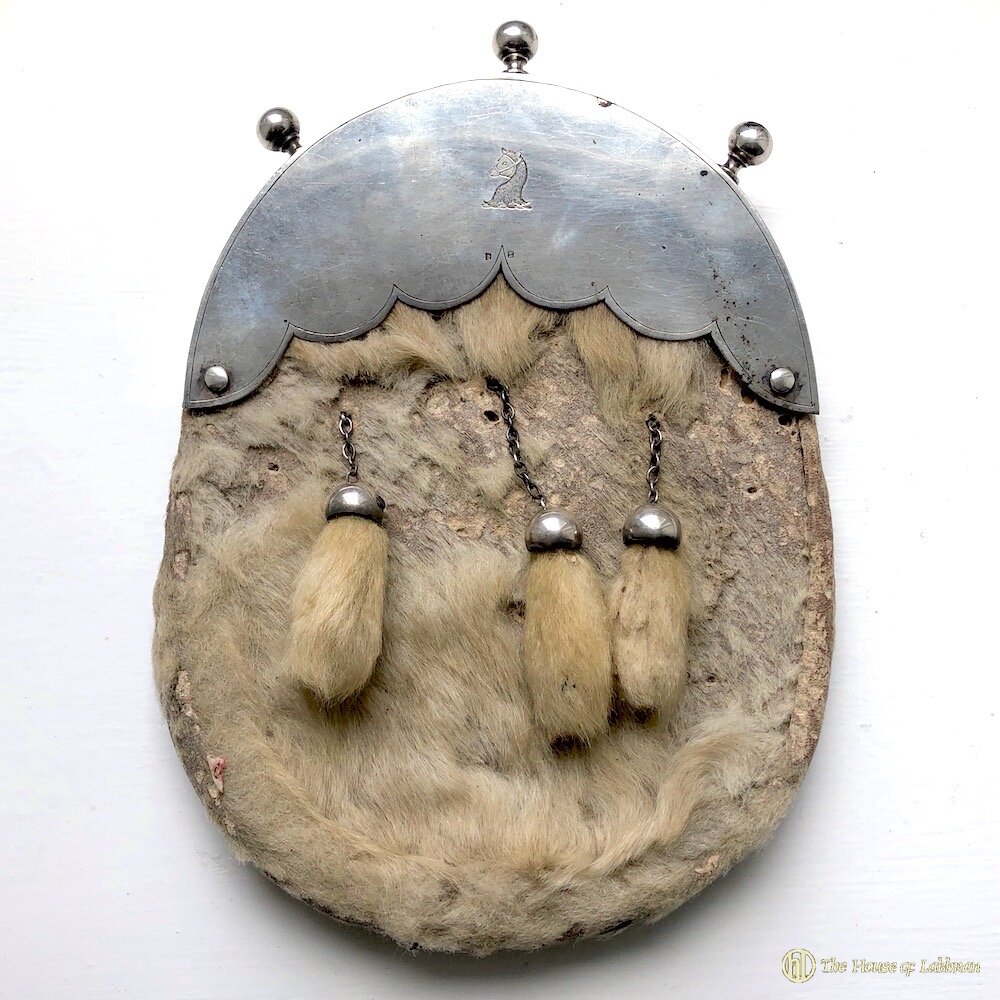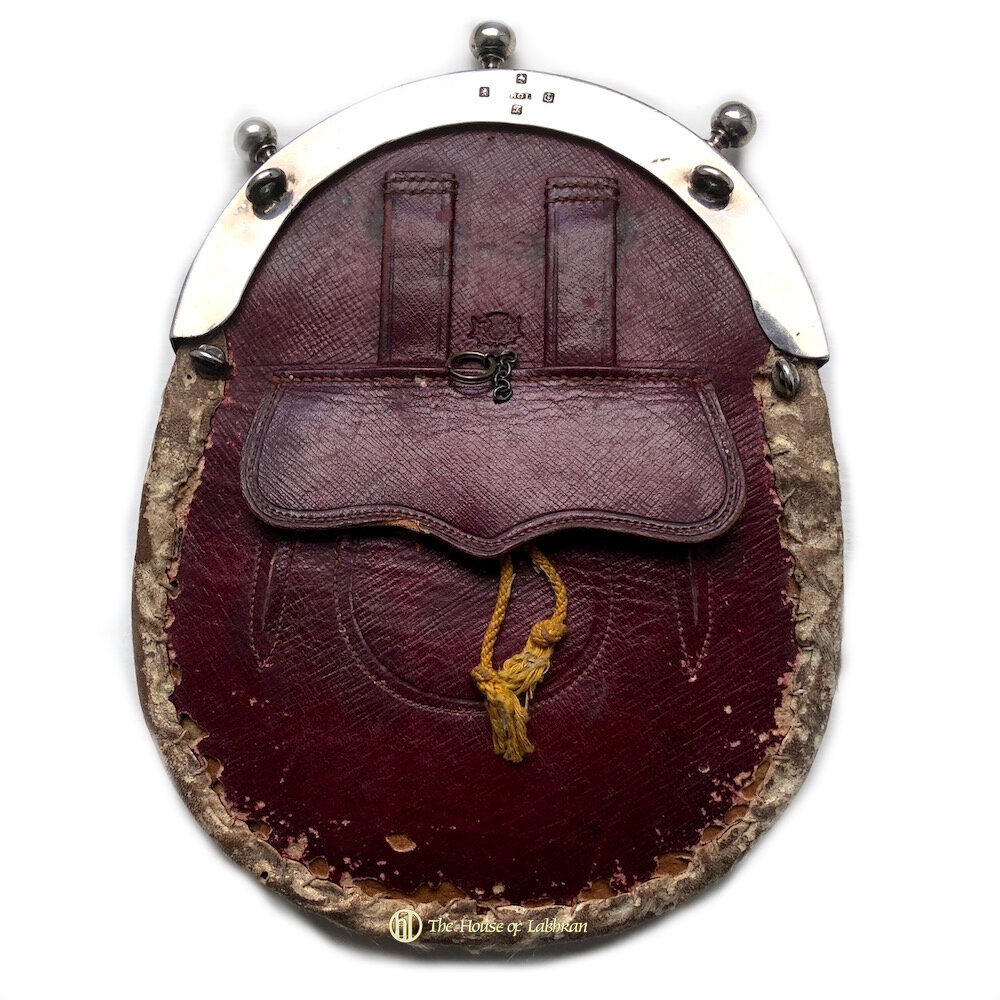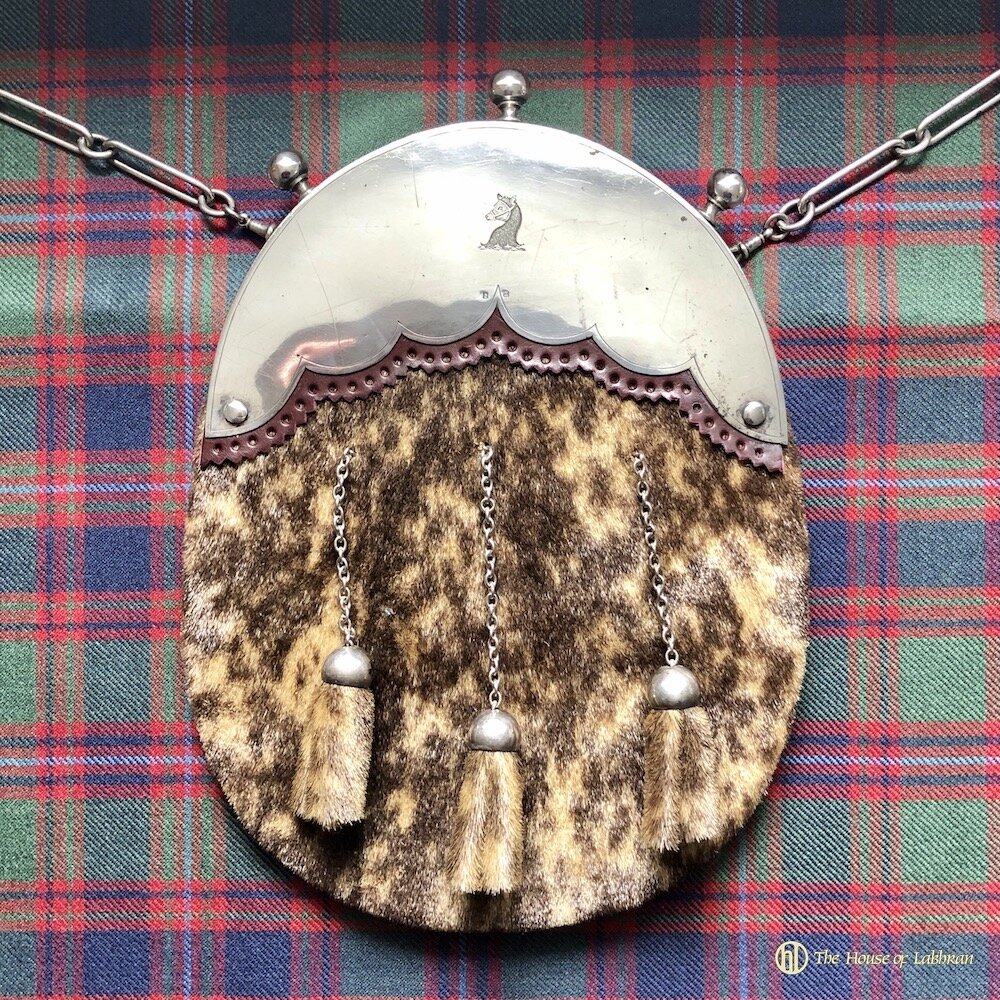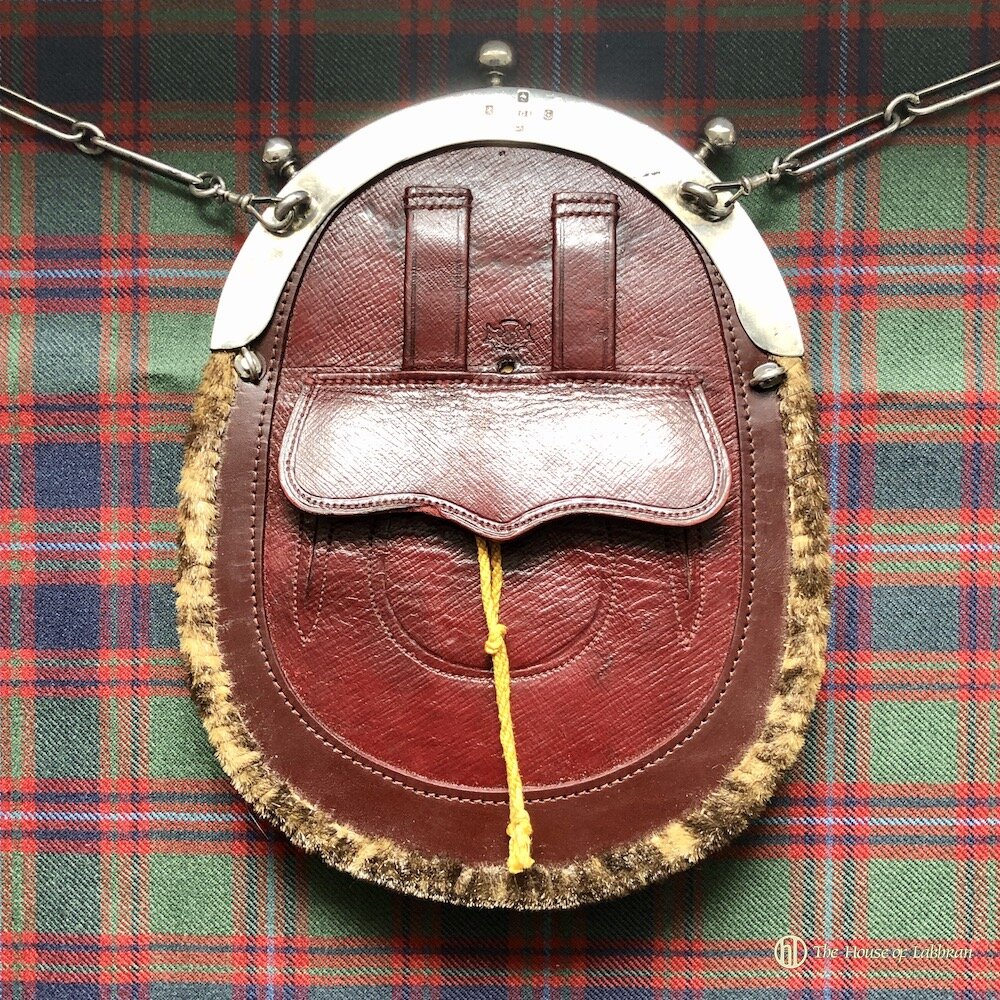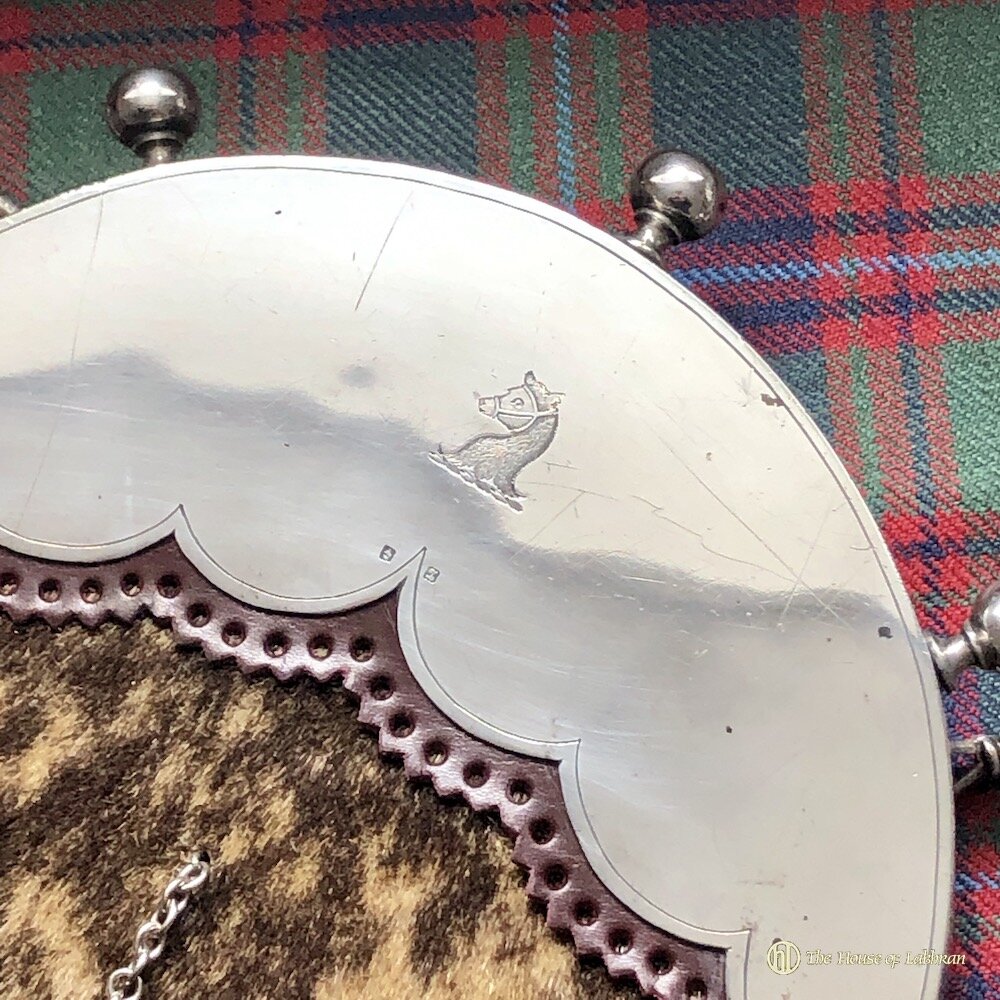R G Lawrie 1922 Silver Sporran Restoration Project
R G Lawrie 1922 Silver Sporran Restoration Project
Engraved Cantle Silver Family Crest
FAMILY - Rush
BLAZON - A Bear's Head Couped, Bezantée, Muzzled, Holding In The Mouth An Ear Of Wheat.
SOURCE - Fairbairn's Book of Crests, 1905 ed.
R G Lawrie 1922 Silver Sporran Restoration Project
Like so many sporrans we see that have been discovered in a ‘ country house ‘ condition, they are much in need of restoration. This was the case with a recent discovery of a 1922 R G Lawrie Glasgow hallmarked sterling silver sporran.
The fur and some of the back leather had suffered not only from wear but also from the moth and beetle attack. However, we did not want to make a new pouch as we felt there was enough of the original sporran to restore keeping it as original as possible.
With any sporran that has suffered from insect damage in the past ( even if it is thought the damage was old ) we felt a 72 hours of freezing would be the best approach. This would kill any wildlife that may be left in the sporran.
The next thing we had to consider was the fur we would use to replace the badly worn front. The original fur was thought to a white young seal fur, but for ethical reasons this was not going to something we would use again. However, we had a vintage adult sealskin pelt that was taken on the West Coast of Scotland over sixty years ago. As the sporran is to stay in the UK and there where no export issues, this was considered to be the right way to go to keep originality.
The leather on the back of the sporran was a classic ox blood colour and with some leather feed it restored well. We wanted to add a slip under the silver cantle with a brogue edge and it was decided to use a similar oxblood hide.
This same hide colour was also to be reflected in the new leathers that were required on the original sporran sterling silver long link sporran chain. The vintage chain was in hallmarked sterling silver and made by Henry Tatton of Edinburgh.
R G Lawrie 1922 Silver Sporran Restoration Project
R G Lawrie Highland Wear - Glasgow
R G Lawrie started business in John Street in 1881 as a manufacturer of bowling green bowls. In 1879 R.G. Lawrie was listed as a wood and ivory turner. In the 1890-1891 directory Lawrie was listed as an 'Ivory Turner Employer'. In the 1890's RG Lawrie had made a set of bagpipes for Queen Victoria's son, the Prince of Wales. It was not until 1900 that he would appear as a bagpipe maker. In 1881 when the army introduced pipe bands, the company began to make kilts, sporrans, feather bonnets and dirks. Arthur Lawrie recalled that during the First World War, RG Lawrie produced 150 kilts, 25 side drums and 150 bugles a week. R G Lawrie later moved to Renfield Street premises as R G Lawrie, manufacturers of bowls, bagpipes and kilts. Later moving to 110 Buchanan Street.



